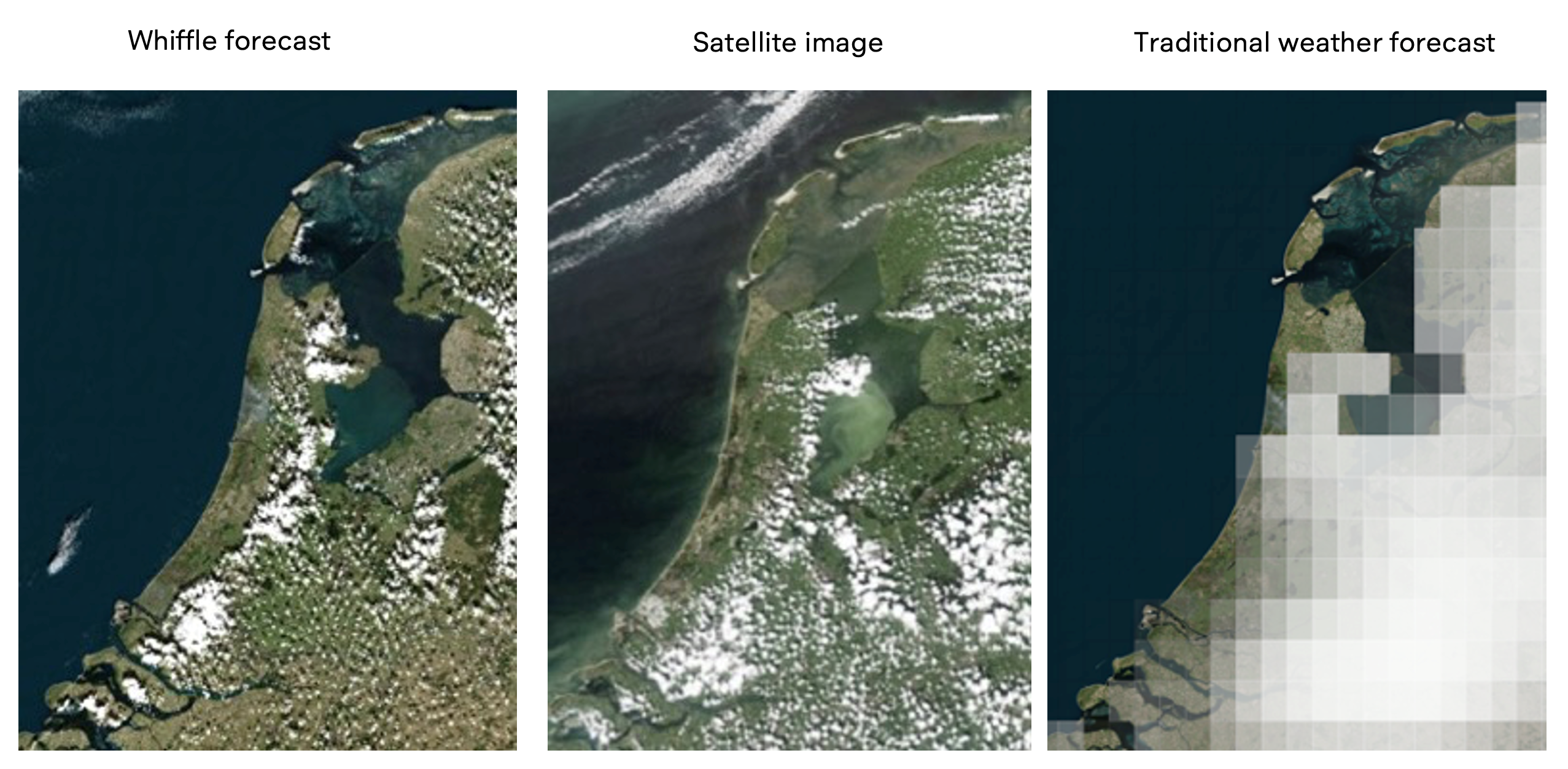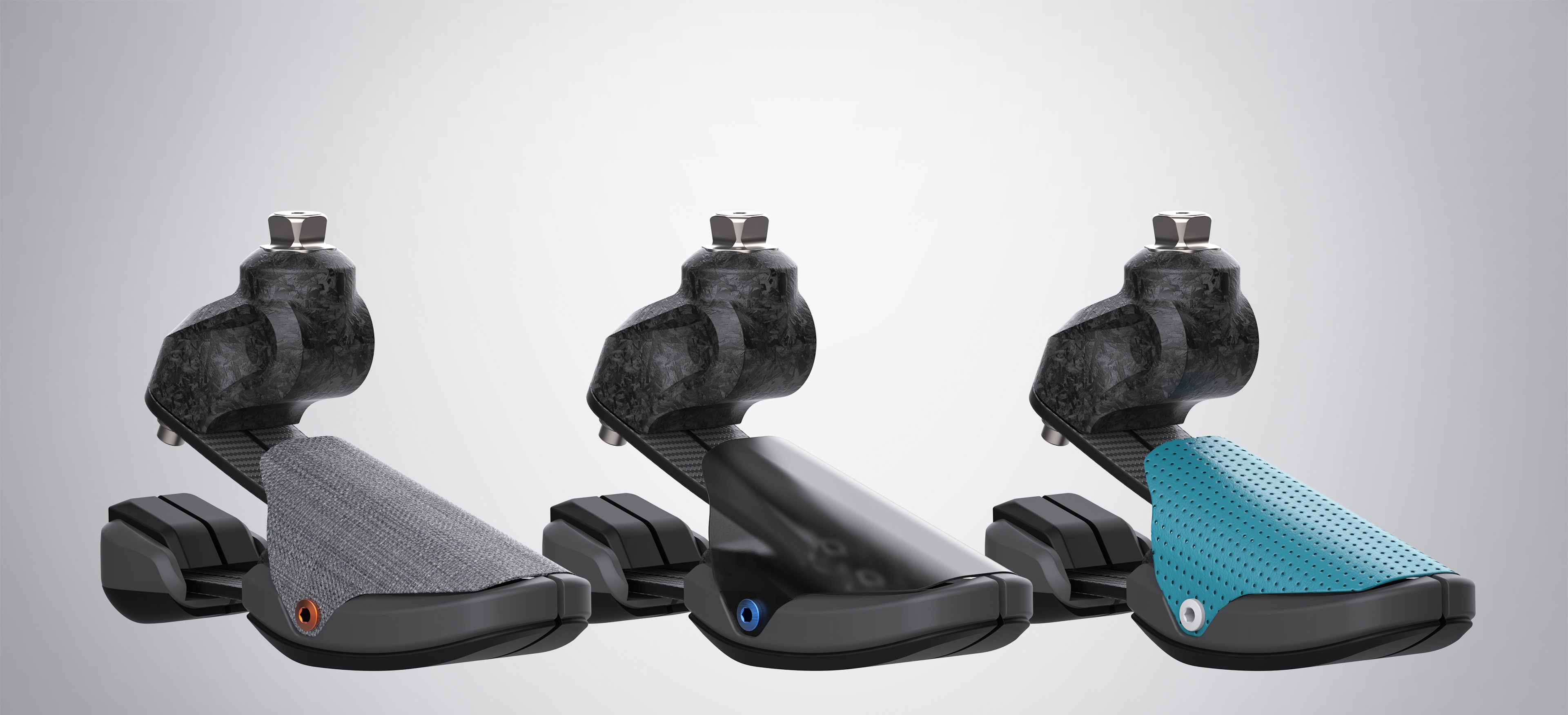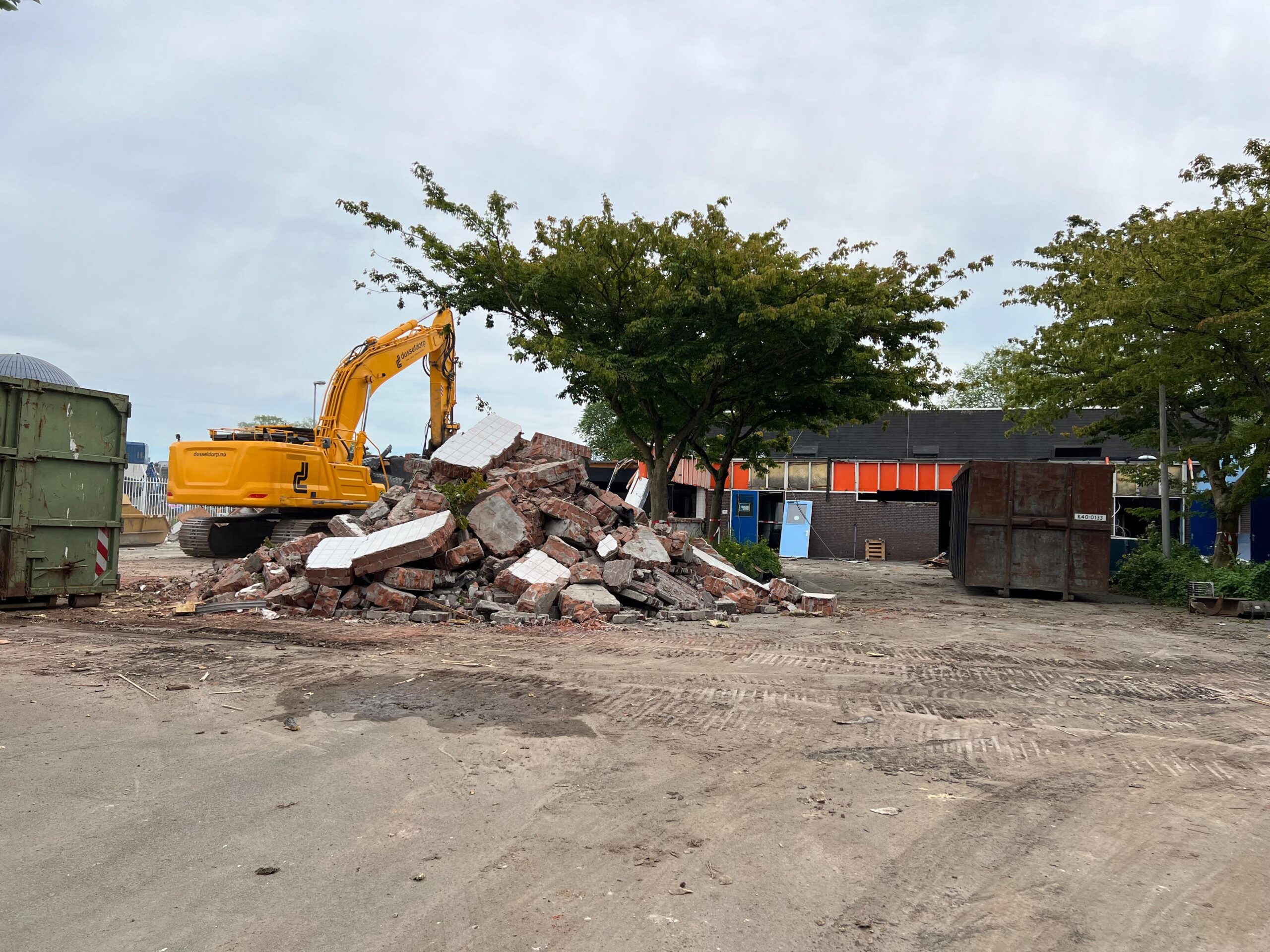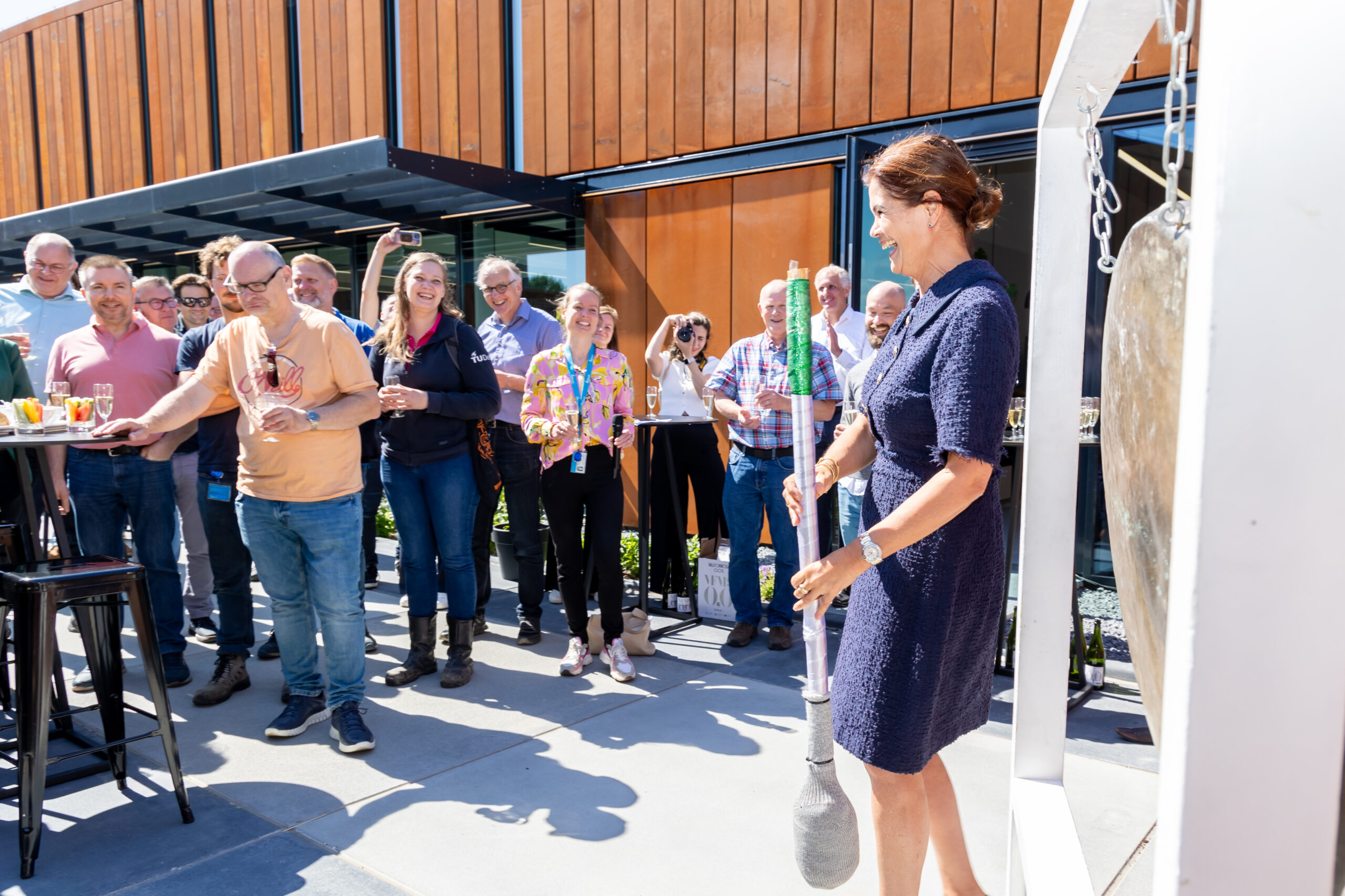You are sitting on a revolutionary idea. But your peers are less than enthusiastic about it. What do you do? That is what happened to Harmen Jonker and Remco Verzijlbergh from Whiffle. Their unshakeable confidence in hyper-detailed weather forecasts for renewable energy turned out to be justified. This year, the company secured funding of three million euros and last week moved with their 23-strong workforce to new offices in the new NEXT accelerator building. ‘Having an office here is worth so much.’
Jonker proudly shows off the brand new office. Light streams through the walls of glass from NEXT’s spacious green atrium while the windows at the rear look out onto the southern part of the TU Delft Campus. Whiteboards with formulas and models all over them are still standing against the wall. ‘We haven’t put these up yet’, he says apologetically. ‘They are all important! Almost everything that really matters at Whiffle is created on those whiteboards.’
Jonker shows what makes Whiffle’s modelling so special, while showing a couple of maps. Traditional weather forecasts work with a grid of 10 km x 10 km blocks and satellite images show more relevant detail in cloud formations. Whiffle’s model works with a grid of 100 m x 100 m blocks: a gigantic leap in detail and information density compared to traditional weather forecasts.

Energy of tomorrow is being traded today
Whiffle’s detailed weather forecasts are widely applicable but for now the focus is on wind and solar energy, explains Jonker. ‘The energy of tomorrow is being traded today. That makes it important for wind and solar farms to be able to accurately predict how much they can supply. Because if you get it wrong, you will have to co-fire with gas-fired plants and that’s expensive – now more than ever.’ Subsequently, if there is a surplus, prices drops sharply. Both situations are undesirable. The better the weather forecasting, the more accurately companies can estimate how much electricity they can supply.
Resource assessment is at least as relevant. Building a wind farm or solar farm is a costly task which makes it important to be able to predict the yield accurately before the farm is constructed. ‘In that respect, we are the miners of renewable energy. People used to look underground for the best places to mine. We find the best places for optimal wind and solar energy yield.’
Whiffle’s models take all kinds of influential factors into account such as buildings, hills and trees. Jonker: ‘We hardly ever make assumptions.’ That volume of data requires enormous computing power. It all started with a supercomputer. Jonker was based in the Faculty of Applied Sciences at the time which collaborated closely with the Faculty of Electrical Engineering, Mathematics and Computer Science (EEMCS). Data sets were used to study the formation of rain, wind and clouds in order to explain the origin of weather conditions. It was always about simulations and looking back based on existing data, says Jonker. ‘It was simply considered impossible to predict the weather in this way.’
Supercomputer versus video game
That changed when someone from EEMCS suggested using video cards (graphics processing units or GPUs). The suggestion was initially met with derision, says Jonker. ‘Those GPUs are normally used for video games. We were working with a supercomputer!’
It turned out to be a smart suggestion and gave co-founder Verzijlbergh – who had previously graduated with Jonker and studied for a PhD in energy markets at the Faculty of Technology, Policy and Management (TPM) – an idea: accurate weather forecasting for wind and solar farms could be made possible by bundling the computing power of GPUs. The two scientists were firmly convinced that they had discovered something special. However, the rest of the scientific community had doubts. Jonker: ‘We wrote shelves full of research proposals, all of which were shot down.’
“Our innovation can help companies worldwide to use renewable energy more efficiently”
Harmen Jonker
CEO Whiffle
Entrepreneurial scientists
It became a defining moment: as born scientists, Jonker and Verzijlbergh did not see themselves as entrepreneurs at all. But they were both firmly convinced of the huge potential of their models. Jonker pinpoints a number of crucial moments for Whiffle, still in its early days. ‘Director Paul Althuis from the Innovation & Impact Centre at TU Delft was equally enthusiastic. He really helped us get started during that period with his advice and guidance.’
It was via Althuis that Whiffle ended up at YES!Delft where the company joined the now renowned incubator programme. Althuis also suggested Climate-KIC, the European climate innovation initiative. And the initial funding to help get Whiffle started was found via the Thematic Technology Transfer (TTT) programme. TU Delft also invested in the spin-off, via Delft Enterprises.
Community of like-minded, growing companies
Whiffle has done well as a result. At YES!Delft, the company was bursting at the seams. NEXT is the ideal location for further growth. Jonker gestures with his arms, pointing out other companies that are in the process of unpacking and setting up all around. ‘Of course, it’s handy that we can share facilities such as meeting rooms. But having an office here means so much more. It’s buzzing here, just like it is at YES!Delft. Here, we are part of a community of like-minded, growing deep-tech companies. What is more, Remco (Verzijlbergh) and I also both still spend one day a week at CEG and TPM – that way we stay in close contact with the academic world.’
NEXT is located in the middle of the TU Delft Campus. Students, researchers and other entrepreneurs are all on their doorstep. Jonker couldn’t wish for a better place to keep on tinkering with Whiffle’s models and come up with new applications. ‘The potential impact is huge. Our innovation can help companies all over the world use renewable energy more efficiently thanks to better weather forecasts and optimising the locations – and layout – of wind and solar farms. As a result, Whiffle can make a real difference by strengthening the competitive position of renewable energy.’



